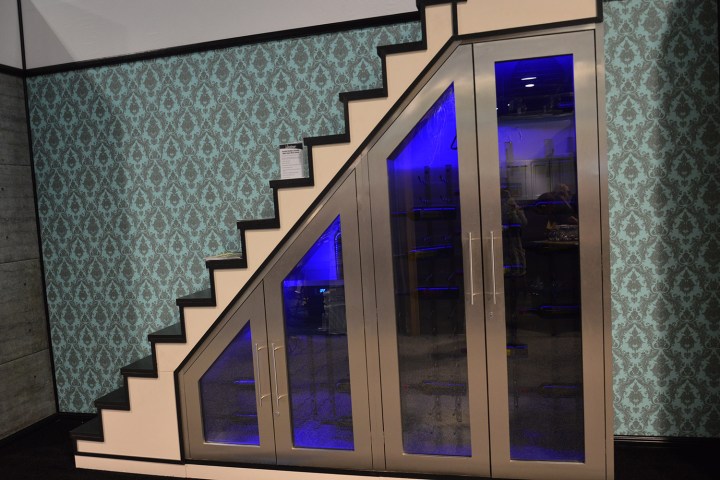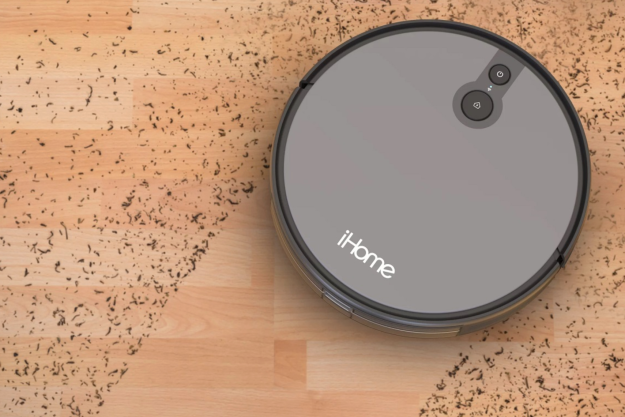
Are you serving or storing?
First, we’re not talking about cellars, walk-in cabinets, or other options for serious collectors. Maybe you just bought a case of wine during a recent trip to your favorite vineyard and want to know if you can just leave it in the box. Maybe. As long as you’re not turning it into an investment and you keep it a cool, dry place, it might be okay. However, a cardboard box might not be ideal. Storing wine on its side keeps liquid in contact with the cork, which is important if it’s made from wood, and you don’t want to subject it to wild temperature swings.
“Wine is a living thing,” Dena Doiron, office manager at wine fridge manufacturer KingsBottle, told Digital Trends. “It has an active chemical process going on, and like most chemical processes, the cold inhibits that activity and heat excites it.” Whether you’re storing red or white, 55 degrees Fahrenheit (about 12.8 degrees Celsius) is often cited as the most desirable temperature. Because the fridge where you store food should be below 40 degrees Fahrenheit (4 degrees Celsius), you don’t want to store bottles in there for very long.
Why a wine fridge?

Wine fridges often have a temperature range between 39 and 65 degrees Fahrenheit (3.9 and 18.3 degrees Celsius). If you’re considering purchasing one, your first choice is between a thermoelectric model and compressor model. Wine fridges without compressors are less expensive — you can get a countertop version of one on Amazon for as low as $108 — and generally hold fewer bottles. “They’re great for stabilizing temperature if you’re in a hot environment, but they’re also highly influenced by the ambient temperature, because they don’t have a compressor,” says Doiron. Thermoelectric fridges use semiconductors, like you find in computers, to cool. As electrical current flows through the device, it conducts heat from one side to the other, making one side hot and the other cold. Compressor fridges are just like the full-sized models you have in your kitchen, meaning they need fans and coolants to operate. While thermoelectric fridges lack the vibrations caused by a compressor — a bonus for wine, which you want to keep as still as possible to avoid stirring up sediment — they can’t get nearly as cool as regular fridges.
Temperate
If wine is ideally stored at 55 degrees Fahrenheit, it might not be best drunk that warm — or cold. There are general guidelines, but you can find temperatures for specific types of wine, too. Yet it’s also subjective. Doiron recommends setting your wine fridge’s temperature to the lower end of the recommended range. When it comes time to open the bottle, let it breathe for a few minutes, then drink a glass. Come back a bit later and taste the wine again. “If you continue to test it and have a beverage thermometer nearby, you can figure out where you reach your optimum,” she says. It’s important to note that thermoelectric wine coolers tend to top out, when it comes to their coldest temperatures, at around 44 to 46 degrees Fahrenheit, so keep that in mind if you prefer your whites chillier.
While you’ll likely be able to set the fridge’s digital display down to the degree, it still operates like a thermostat. “In order for the compressor to be signaled to kick on, there has to be a variation from that temperature,” says Dorion. “How tightly it holds to that is going to be based on how the cooler itself is programmed.” That means if you have the cooler’s temp set to 55 degrees Fahrenheit, the compressor might not kick on until the air in the cabinet reaches 59 degrees Fahrenheit. A fan will help circulate the cold air so the compressor doesn’t have to kick on as often to keep energy costs down. But as Dorion points out, it’s the air temperature, not the wine temperature, that sets everything in motion. While the ambient temperature is fluctuating by several degrees, the wine’s should remain relatively stable, because it takes more energy to heat or cool the liquid by a degree.
Zoning laws

Once you figure out whether or not your fridge needs a compressor, you have another choice: The number of zones. Single-zone fridges let you dial in one temperature at a time, while dual-zones have separate compartments. This means you could have one section kept at 55 degrees Fahrenheit for storing and another at 50 degrees Fahrenheit, so you always have ready-to-pour champagne on hand. Though they tend to be more expensive, Haier, for example, has a 12-bottle, dual-zone model for $174.
And while 12 bottles may not seem like a lot, it’s the size of your collection you need to take into consideration. “You don’t want to just jump to the largest unit, because that means the compressor will continue to work to cool the air,” says Dorion. The sweet spot is a fridge that’s about 50 to 70 percent full, she says, because the bottles will act as insulators.
Obviously, you’ll want to take placement into account, too. You can’t just put any old wine fridge outdoors (especially the thermoelectric ones), but you do want the unit to get circulation. There are many under-the-cabinet versions, but you don’t want the unit sitting in the sun. Not only will it have to work overtime if it gets too hot, those UV rays are bad for your bottles. Some models even come with a protective coating on the doors to minimize the sun’s effects.
While you can get relatively affordable options when it comes to wine coolers, the sky’s the limit in the other direction, too. Wooden shelves, blue LEDs, locks, mahogany exteriors, and exhaust systems can drive the price of some units to more than a car. “Wine refrigerators tend to be almost artisan in the refrigeration market,” says Doiron. “They’re smaller runs and, in many cases, custom-produced.”
Even if you don’t think a wine fridge is worth the cost, just remember that even your ordinary wine bottles will suffer if you move them from a hot, sun-soaked car to the fridge.
Editors' Recommendations
- The 4 best smart thermostats that don’t require a C-wire
- The ‘Look and Talk’ feature means you don’t have to say ‘Hey Google’
- The best wine coolers for 2019


